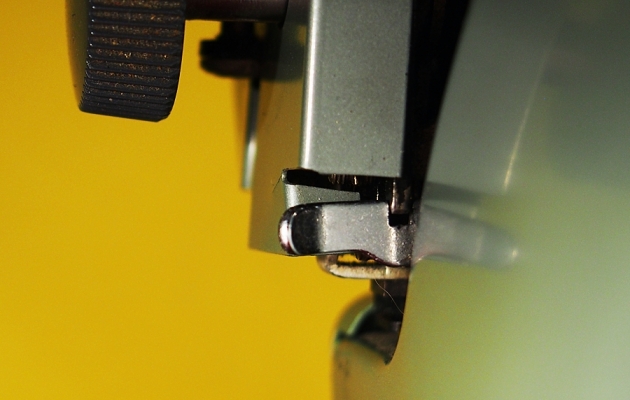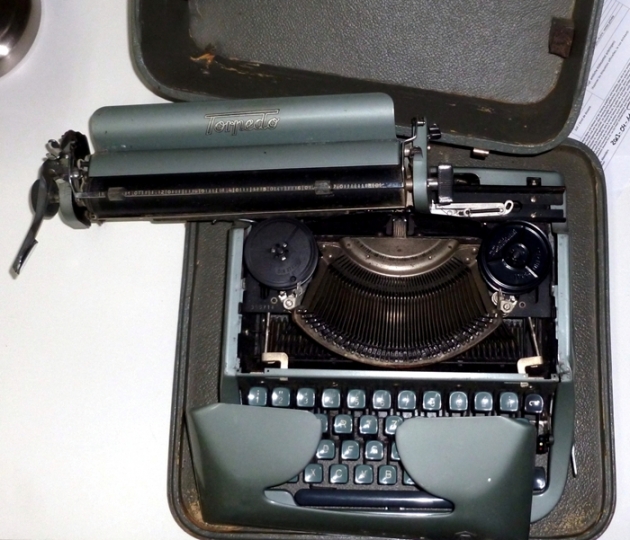- beak
- Key Master
 Offline
Offline 
- From: Qld Australia
- Registered: 24-3-2013
- Posts: 929
Lock carriage for transport?
Have read in many respected places that the carriage should be locked for transport - but this seems very wrong to me, and I usually ask senders to leave the carriage unlocked and also to hold down the carriage release with a strong rubber band so that the carriage may move freely in transit. Then to pack either side of the carriage with bubblewrap or old scrunched up newspapaers.
It seems to me that if the parcel receives a bad knock when the carriage is locked, the ratchets and gears will be stripped or damaged, but that if the carriage is free, all that will happen in that circumstance is that it will move - without damage.
Any thoughts or relevant experiences?
Sincerely,
beak.
- Uwe
- Moderator
 Offline
Offline 
- From: Toronto, Canada
- Registered: 12-3-2013
- Posts: 4,410
Re: Lock carriage for transport?
The manufacturers specifically designed and included a carriage lock to protect the machine during travel, so I don't see how it can be viewed as a bad thing. A carriage lock, when properly engaged, completely immobilizes the carriage and prevents any movement - at least not enough for the escapement to be damaged by a hard knock. Sending a machine by mail with the carriage release depressed is far more likely to cause extensive damage to the machine. I think you're playing with fire.
Here's an example of what I mean. The machine below HAS a carriage lock (first photo), but the person I bought it from didn't use it, and by the time it arrived the carriage was completely torn off of the machine. I gave them specific packing instructions and they assured me it would be well protected.

The pronoun I has always been capitalized in the English language for more than 700 years.
- malole
- Inactive Account
 Offline
Offline 
- From: East Anglia, UK
- Registered: 02-6-2014
- Posts: 330
Re: Lock carriage for transport?
The Corona Silent I bought last summer arrived badly damaged because of an unsecured carriage. Perversely, it was well wrapped on the outside of the case but left rattling about inside. Today I unwrapped a Remington model 5 that was sort of semi-swaddled, with a bit of bubble wrap on the outside, and some foam-wrap inside the case - but the carriage was locked and the typewriter is in super condition.
- beak
- Key Master
 Offline
Offline 
- From: Qld Australia
- Registered: 24-3-2013
- Posts: 929
Re: Lock carriage for transport?
I guess I started thinking this way because the first TW that I had sent from Germany was wrecked even with the carriage lock on. The SM4 had clearly taken the almost inevitable jolt, and the carriage lock had sheared thus wrecking the gears in turn. The lock (even on an Olympia) is a fairly lightweight prong of metal engaging in fairly shallow nothches, and rather easily overcome by force.
To be clear, we are only ever talking about left/right carriage movement; vertical movement is hardly affected one way or the other by the lock, and packing on top of the carriage is madatory anyway. If the carriage release is not engaged, there is always going to be the chance that the lock will fail and the severe damage result. With the lock off, and the carriage release held down allowing free right/left travel, damage is only possible at the very end of the carriage travel - which is imossible within the main case of the machine. Cushioning the left and right ends of the carriage is mandatiry, of course.
From what I have seen of new machines, manufacturers place many additional securing fixings for transport from the factory (which must be removed before use) and do not rely on the single carriage lock. I guess they do that because they believe the normal carriage lock is not up to the job of protecting the machine from damage in transport.
I think the carriage lock is generally intended to stop the carriage flopping from side to side when the machine is carried, say, from one room to another by hand.
A matter of opinion, certainly, but worth thinking about.
Last edited by beak (31-1-2015 16:41:07)
Sincerely,
beak.
- •

 1 of 1
1 of 1